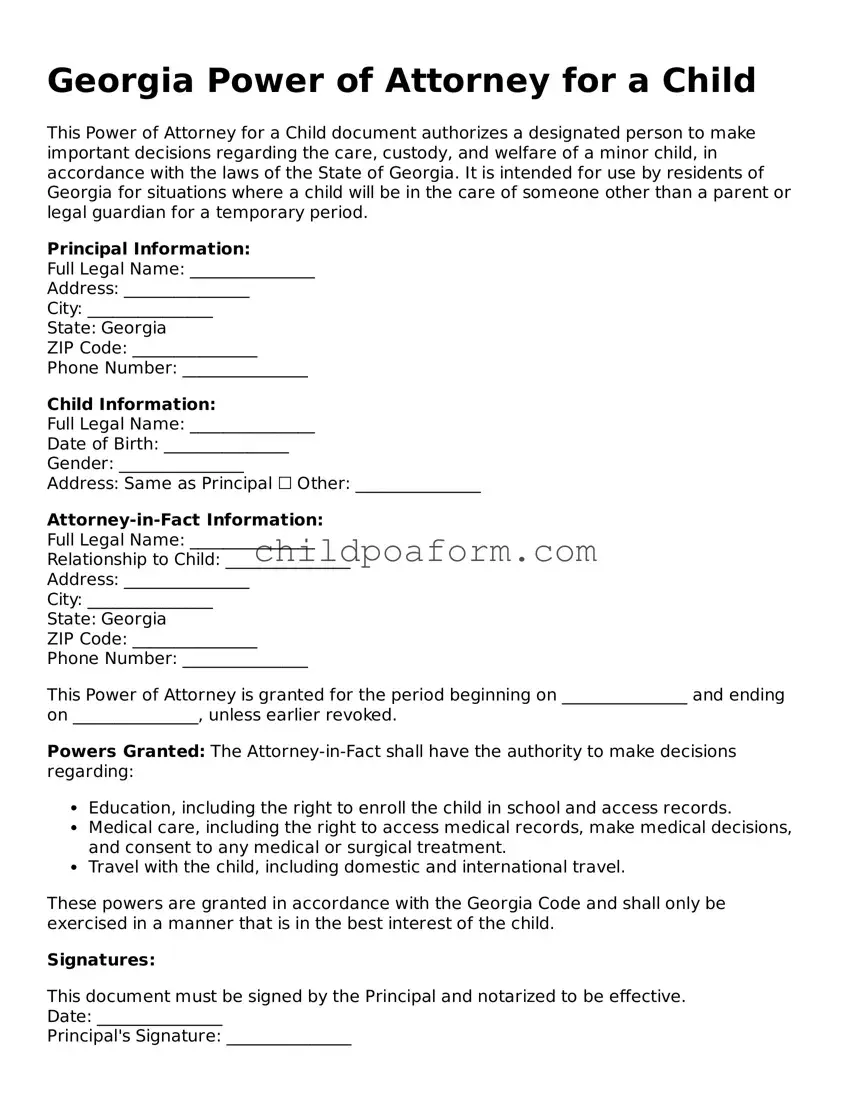Instructions on Utilizing Georgia Power of Attorney for a Child
Filling out a Power of Attorney (POA) for a child in Georgia grants another person the legal authority to make decisions regarding the child’s welfare, education, and healthcare. This process requires careful consideration and precise completion to ensure that the child's interests are safeguarded and that the authority is effectively transferred. The steps to fill out this form ensure that all necessary information is provided and that the POA is legally binding. Here is a step-by-step guide to assist in the process.
- Begin by reading the entire form to familiarize yourself with the sections and the type of information required.
- Enter the full legal names and addresses of the parent(s) or legal guardian(s) granting the power.
- Fill in the full legal name and address of the person (agent) being granted the Power of Attorney to make decisions for the child.
- Specify the full legal name, date of birth, and address of the child or children to whom the POA applies.
- Clearly outline the specific powers being granted to the agent. This may include decisions related to the child’s education, healthcare, and general welfare.
- Determine the duration for which the POA will be effective. Georgia law allows for a POA for a child to remain in effect for a maximum of one year unless otherwise specified.
- Both the granting party (or parties) and the agent must carefully review the authorities and limitations detailed in the form. This ensures both parties understand the extent of the powers being transferred.
- Sign and date the form in the presence of a notary public. It’s crucial that the document is notarized to have legal effect.
- Finally, provide a copy of the completed and notarized POA to the agent and keep a copy for your records.
Once the form is completed and notarized, the agent will have the legal authority to make decisions for the child within the scope defined by the POA document. It’s important to communicate with all parties involved, including the child if appropriate, to ensure a clear understanding of the arrangement and the responsibilities it entails.
